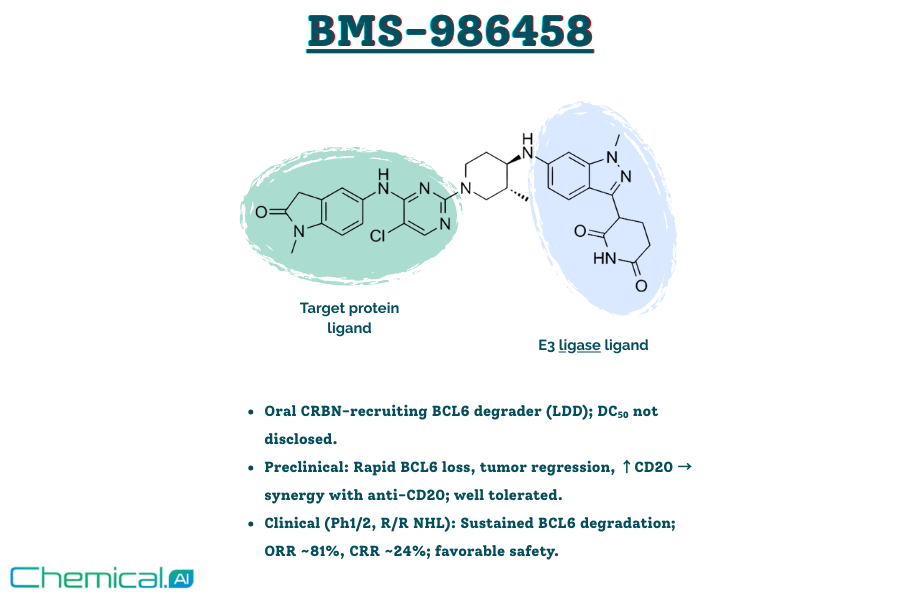Blog

Integrating Human Insight with AI: Retrosynthetic Exploration of Surzetoclax (ABBV-453)
Using ChemAIRS, we explored synthetic pathways to AbbVie’s Surzetoclax (ABBV-453), a highly complex, next-generation BCL-2 inhibitor weighing nearly 1000 Da with multiple fused tricyclic and macrocyclic rings. In High-Risk Retrosynthesis mode, ChemAIRS showcased its ability to navigate this molecular complexity. Guided by human insight, the AI-driven retrosynthesis platform delivered a streamlined, convergent, and experimentally executable synthesis, highlighting the power of human-AI collaboration in modern drug discovery.

Bridging Biology and Chemistry: BCL6, BMS-986458, and AI-Predicted Routes to Scalable Degraders
This blog explores the role of BCL6 as a central lymphoma driver and the clinical progress of Bristol Myers Squibb’s oral degrader BMS-986458. It also discusses AI-driven retrosynthesis tools like ChemAIRS, which propose palladium-free, scalable synthetic routes to overcome key challenges in PROTAC development.

Expanding the Therapeutic Toolbox: New Modalities for Modern Drug Hunters
This article reframes drug discovery around a central strategic question: not simply ‘Can we inhibit this target?’ but ‘What’s the optimal way to modulate this biology for the right patient?’ Through a case study on dabrafenib’s paradoxical MAPK activation, it shows why conventional inhibition can fail and how next-generation BRAF inhibitors and targeted protein degraders avoid those pitfalls.
It then zooms out to map the full range of modern modalities, from antibodies and RNA therapeutics to ADCs, PROTACs, molecular glues, and tri-complex inhibitors, and the frameworks that guide their selection based on biology, mechanism, and practical constraints. With examples like Revolution Medicines’ macrocyclic molecular-glue approach to RAS, the piece positions modality choice as a competitive advantage in creating the next generation of precision medicines.

Enhancing the Retrosynthetic Strategy for Orforglipron (LY3502970) Using ChemAIRS: Developing a More Streamlined and Efficient Synthetic Route Suggestion_EP18
ChemAIRS revolutionized the synthesis of Eli Lilly’s oral GLP-1 agonist Orforglipron—optimizing key intermediates and streamlining scale-up conditions for commercial-ready production. Accelerate your metabolic drug development with AI-driven retrosynthesis.
